
Dayara Bugyal Trek
TREK DIFFICULTY
Easy
TREK DURATION
6 Days
HIGHEST ALTITUDE
11,950 Feet
GROUP SIZE
12
TREK DISTANCE
17 Km
BASECAMP
Uttarakhand
BEST TIME
Jan | Feb | Mar | Aprill | May | Jun | Sep | Oct | Nov | Dec
PICKUP POINT
Dehradun
Dayara Bugyal Trek Overview
Dayara Bugyal Trek is one the most popular winter treks in the Uttarkashi district of Uttarakhand, India, and specifically is a 5 to 6 days hiking based itinerary to explore the majestic alpine meadows, local culture of Barsu & Raithal, surrounding Himalayan peaks, a goat village, the unique butter festival, and many more. The trek starts either from Raithal or Barsu and often is done in a loop with trekkers returning to the same base camp they start the trek from, i.e. Raithal or Barsu.
Another unique option is to start the trek from Raithal and end the trek at Barsu. This unique itinerary allows trekkers to experience more in the same trekking duration.
History of Dayara Bugyal
Located in Uttarkashi district of Uttarakhand, Dayara Bugyal has great historical and cultural significance. Uttarkashi was part of Garhwal Kingdom and had been ruled by the Panwar (Parmar) dynasty around the 9th century CE. After independence, Uttarkashi became a separate district in 1960 and since then this region has been prioritized for tourism and hydroelectric projects. Dayara Bugyal region is often associated with Lord Shiva and Goddess Ganga. Many temples here reflect the rich Himalayan architecture (crafted Goddess Ganga and Goddess Yamuna on temples' walls and gates). Dayara Bugyal was also linked to the epic Mahabharata as the Pandavas are believed to spend their exile years here.
The nearby villages of Dayara Bugyal are full of Garhwali culture. People follow age-old traditions here related to agriculture, seasonal migration and livestocks. Folk songs and dances also tell many stories related to Dayara Bugyal and Garhwali culture.
Festivals like Makar Sankranti, Basant Panchami, Harela, Phool Dei are celebrated with great enthusiasm. Butter Festival (Anduri Utsav) of Dayara Bugyal is famous for its unique tradition and celebration.

Here are some of main highlights during the Dayara Bugyal Trek:
1. Beautiful Meadows of Dayara:
This trail takes you through dense forests to Dayara Bugyal, one of the high altitude meadows of the Uttarakhand Himalayas, starting at 11000 ft and reaching a maximum height of 12500 ft. These meadows captivate every trekker's heart with their beauty, especially during spring and summer. The lush green meadows turn into snowfields during the winter months and are an ideal destination for skiing or snowboarding. This is usually possible from late December to early March.
2. Amazing view of Greater Himalayan Range:
Looking towards the northeast on the Dayara Bugyal trail, the view of the Gangotri range amazes trekkers. Peaks like Draupadi ka Danda (5,670 m), Srikantha (6,133 m), Jaunli (6,632 m), Bandarpunch (6,316 m) and Black Peak (6,387 m) are also visible. This breathtaking view of the mountains seems to be saying that you have honored the promise you made to yourself "the mountains are calling, and I must go".
You will be able to see peaks like-
- Gangotri (6,672 m)
- Bandarpoonch (6320 m)
- Draupadi ka Danda (5670 m)
- Shrikhand Mahadev (5227 m)
- Kalanag (Black Peak) (6387 m)
- Jaonli (6,632 m)
- Srikanth (6133 m)
- Bakariya Top ( 3810 m)

3. Dense forests:
The Dayara Bugyal trail becomes extremely beautiful in the spring season when the rhododendrons are in full bloom. The trees laden with rhododendrons (1500-3500 m) add immensely to the beauty of the Dayara Bugyal trek. While in winters, the same trees when laden with snow make the trail feel like a path to heaven. This trek is a great alternative to the crowded Kedarkantha trek during the peak winter season, as the Dayara Bugyal trek has abundant snow and rhododendrons as well as deodar trees which offer the same spectacular views as Kedarkantha.
4. Goat Village:
There is a special Goat Village on the Dayara Bugyal Trek also known as Bakra Basti. The village is home to goats which is why it is known as Bakra Basti. The Goat Village leads to the top with an elevation of 3,048 meters after a 9-kilometer trek. The Goat Village is an initiative for rural women's empowerment that has earthen wooden cottages, and tent pitching and it also serves local food.
5. Way towards Dodital and Gidara Bugyal via Dayara Bugyal Trek:
The Dayara Bugyal trek offers a great opportunity to explore additional sites like Dodital Lake and Gidara Meadows. Both these sites can be easily included in the Dayara Bugyal itinerary and it can take around 10-12 days to complete this combined trek.
6. Butter Festival:
The Butter Festival (Anduri Utsav) is organized by the locals at the high altitude Dayara Bugyal, which is a unique and special festival dedicated to Mother Nature and Lord Krishna. This festival is held every year between 16th and 18th August. During Bhadon Sankranti, the festival begins with the locals playing Holi with butter and milk at an altitude of over 10,000 feet. In this butter festival, Dhol Damau (a local instrument) is played along with local instruments and dramas and through this they express their love for Lord Krishna and nature. To enjoy this attraction during Dayara Bugyal trek, you should choose your trek in the month of August.
At Himalaya Shelter, we provide you with the option to customize your trekking experience. Whether you're a solo traveler, a group of friends, or a family, you can opt for our personalized tailor-made trekking program. This customized trek will be exclusively designed for you, taking into account your specific requirements for transportation, accommodation, meals, and any other premium facilities you may need during the trek. No other participants will be added to your group. Choosing a customized trek will enable you to fully enjoy the trek with your loved ones. Learn about what a Customized Trekking program looks like.
Dayara Bugyal Trek is easy to moderate level trek making it perfect for beginners. Additionally, children above 10 years of age can trek easily. Moreover, you just have to deal with and get used to the high altitude otherwise there are no such difficulties and trekking challenges during the Trek. This is also the reason this trek is preferred by families with children.
However, there can be chances that you can face some challenges mentioned below:
- In the initial stage of the trek, you can face stamina tests because you have to climb to the Dayara top from base camp to the forest. Although it's not so difficult generally it depends on the stamina too.
- Another challenge can be the hard snow you have to be careful while dealing with the snow because there can be chances of slipping as snow is prone to slips so, be careful and wear your microspikes while climbing the steep and firmly keep your feet.
- With the high altitude trail, there can be chances of mountain sickness which can lead to symptoms of headache, weakness, nausea, and a loss of appetite. These all symptoms are rare on the trek of Dayara Bugyal, so, there is no need to worry much about.

How to reach Raithal , basecamp of Dayara Bugyal Trek
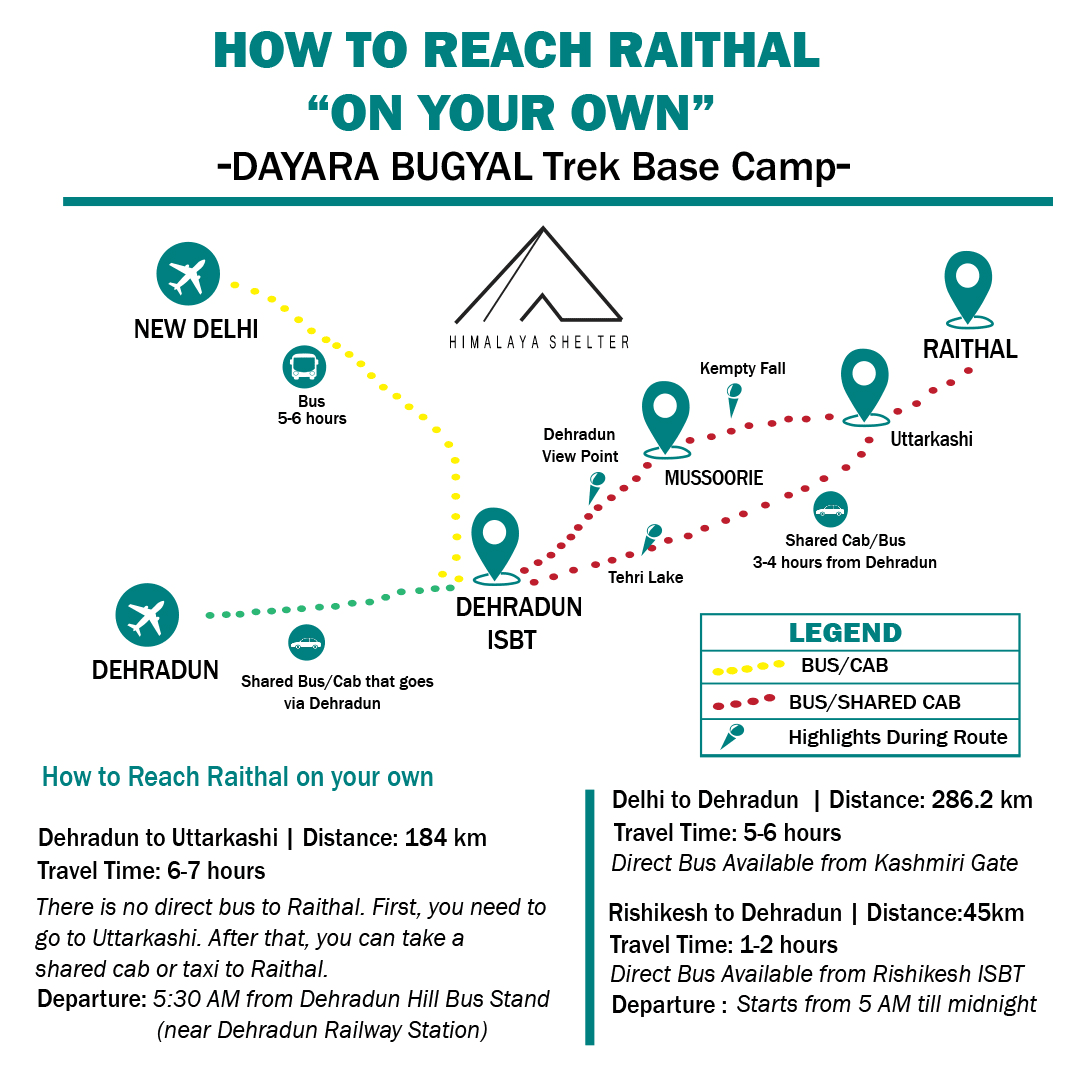
How to reach Raithal , basecamp of Dayara Bugyal Trek "On Your Own"
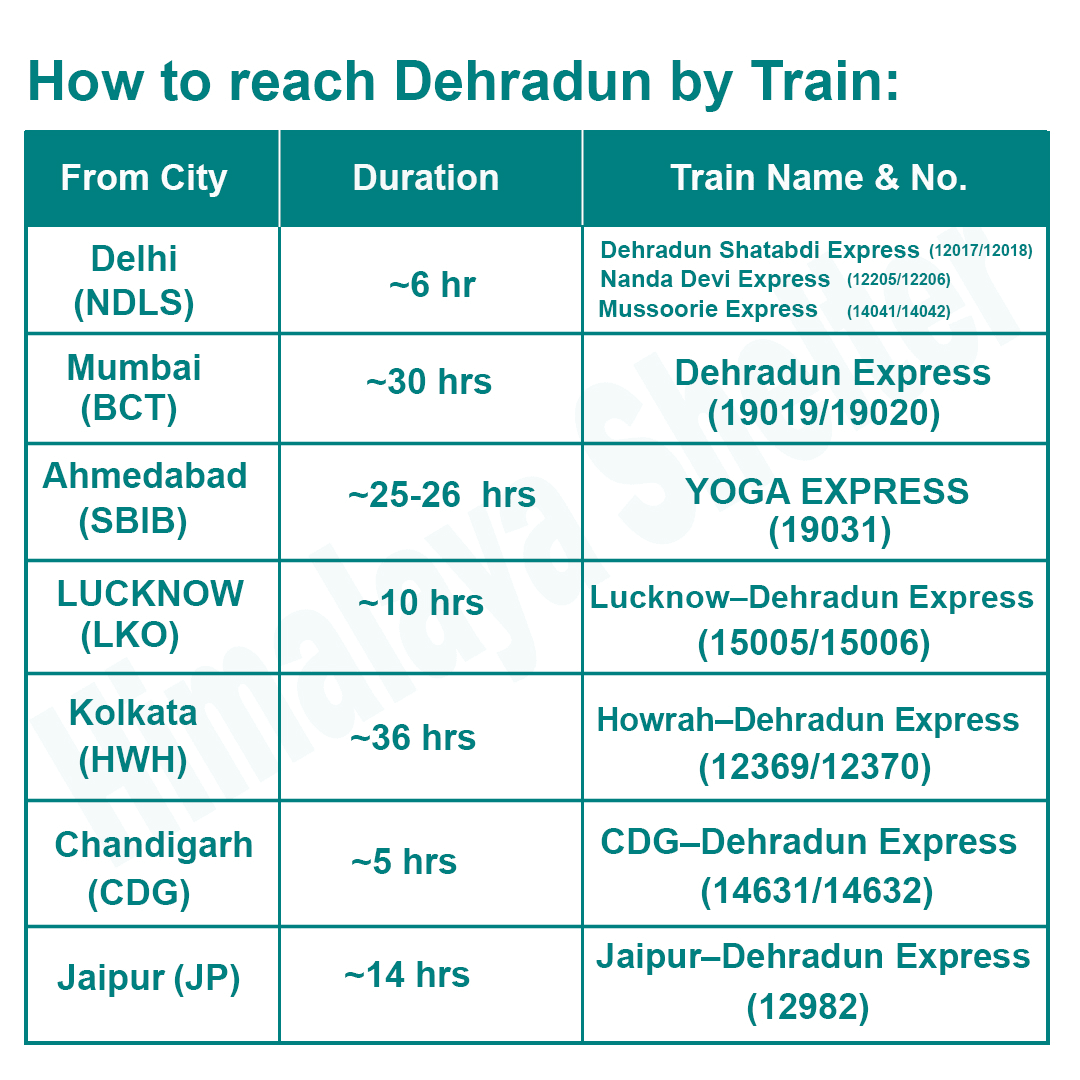
How to reach Dehradun by Train
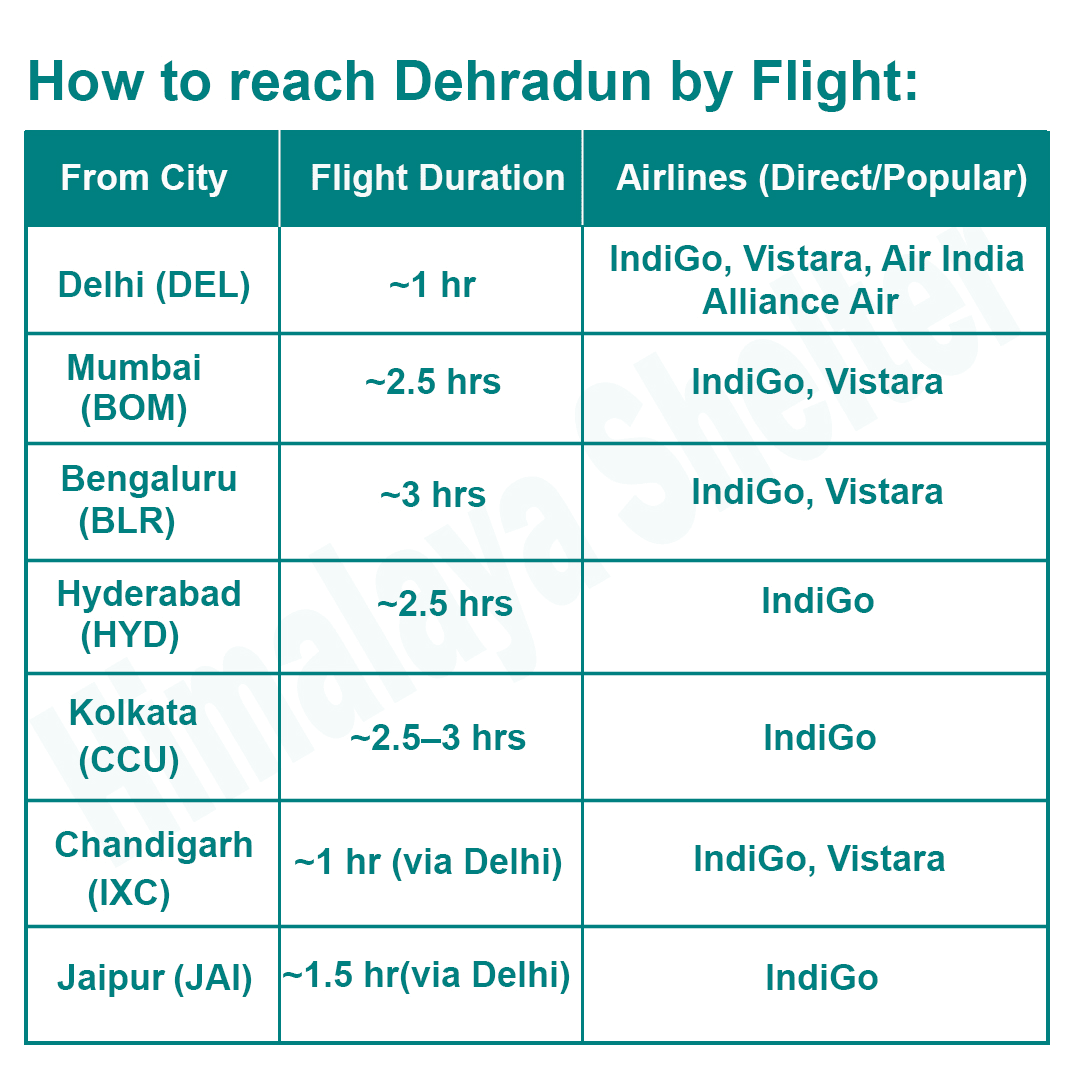
How to reach Dehradun by Flight
Discover the route map of the Dayara Bugyal Trek, highlighting key stops on the trail such as Raithal, Gui Campsite, Dayara Top, and surrounding mountain peaks like Black Peak, Mt. Bandarpunch, DKD, Gangotri I, II, & III, Mt. Jaonli, and Mt. Srikanth. This map ensures easy navigation through the trek.
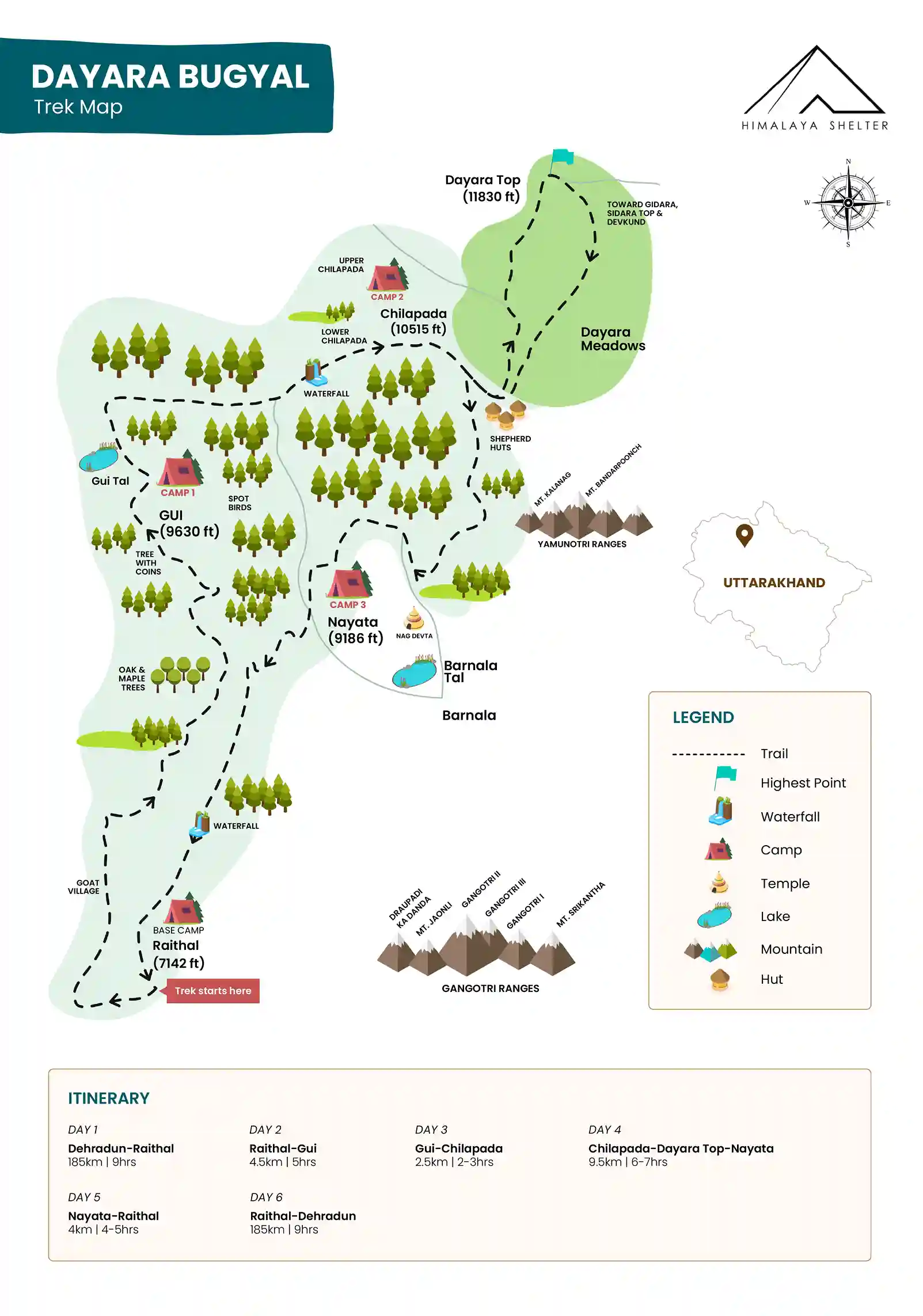

Mandatory Backpacking List for Dayara Bugyal Trek
If you’re physically fit and aware of the safety precautions for the Dayara Bugyal Trek, you’ll experience the beauty of this trek 200% more effectively compared to those with weaker physical fitness and insufficient knowledge of safety precautions. This preparation enables you to fully enjoy the majestic landscapes and challenging trails without being held back by fatigue or physical limitations.
Preparation for a Good Physical Fitness:
To overcome the difficulty level of Dayara Bugayl Trek, it requires some cardiovascular endurance, muscular strength, and overall fitness. Incorporate these exercises into your routine to increase strength, stability, and stamina, which will help you tackle the difficult terrain of the trail at high altitudes.

Overview
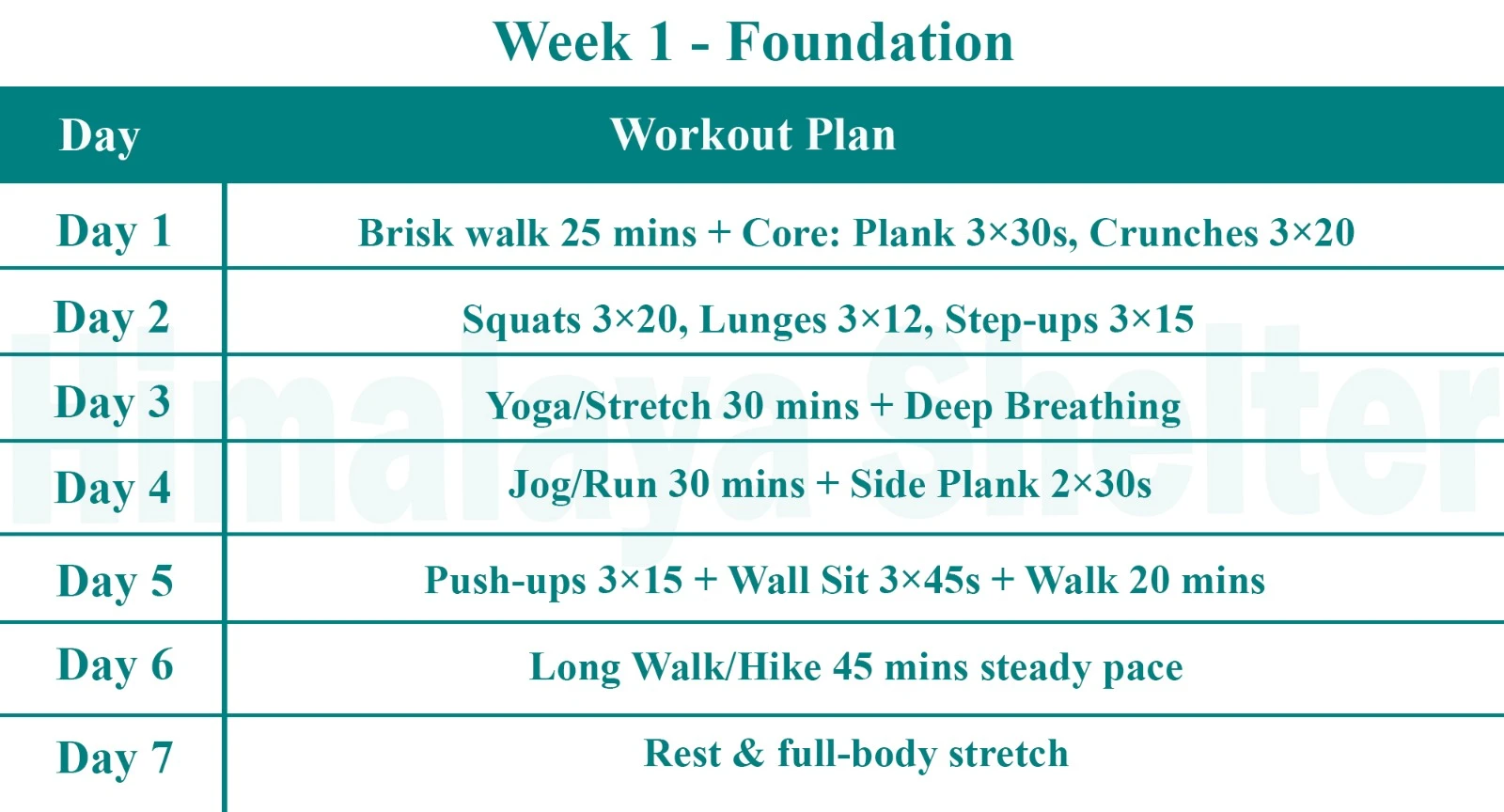
Foundation

Strength Building
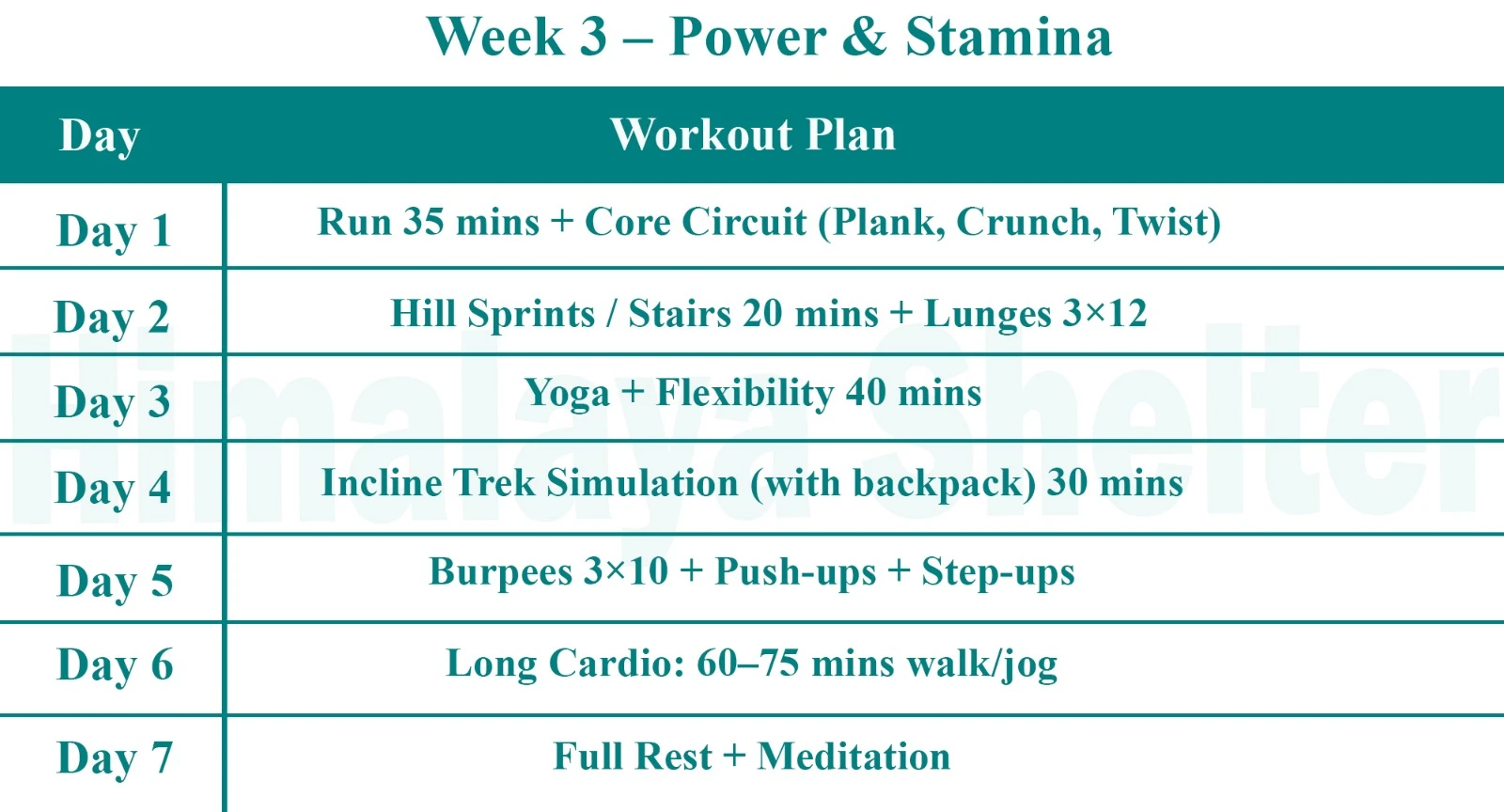
Power and Stamina
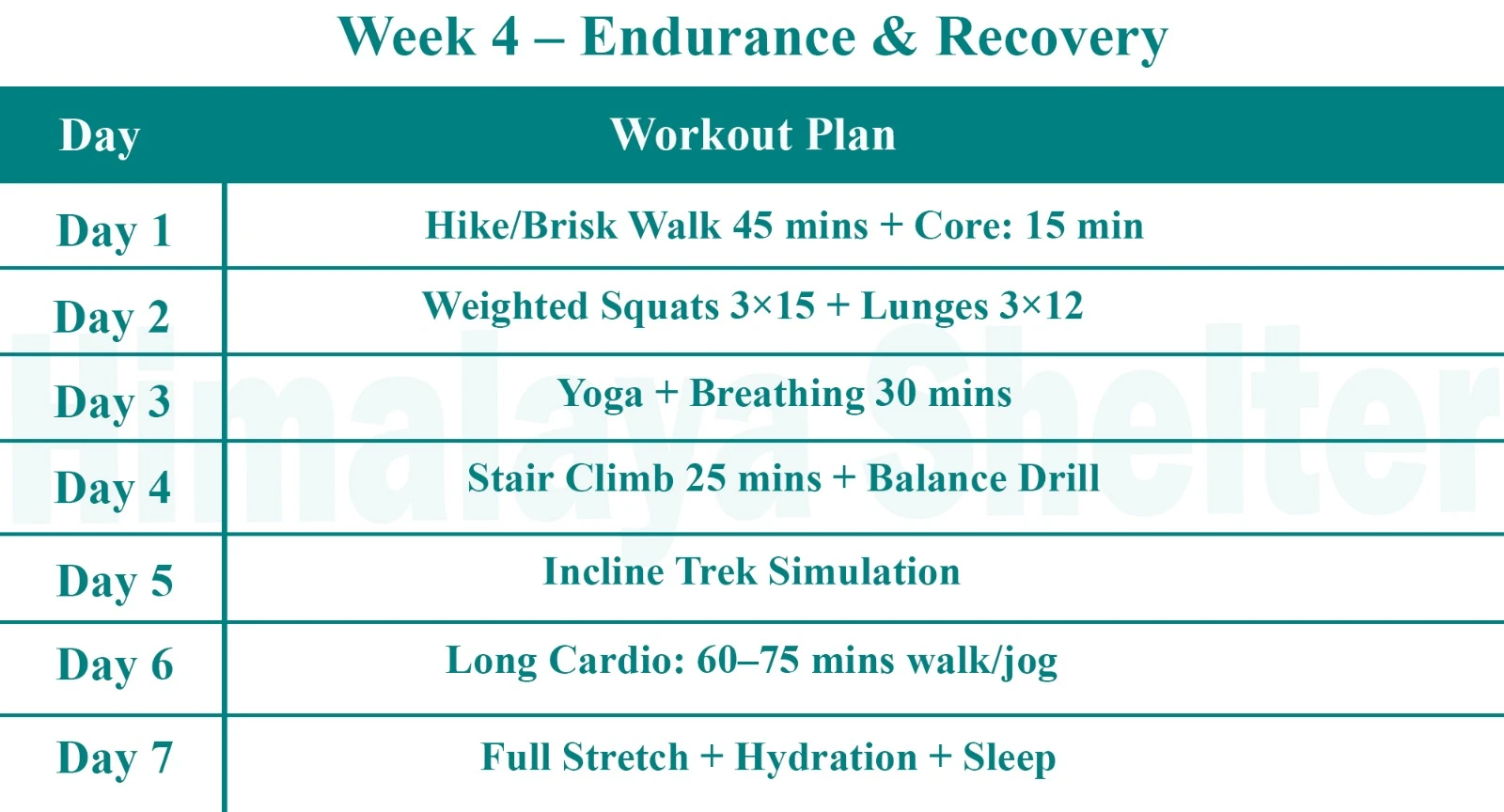
Endurance and Recovery
Additional Tips:
- Consistency & Form: Maintain proper technique and gradually increase intensity.
- Recovery & Flexibility: Allow muscle recovery, and stretch before and after workouts.
- Balance Training: Incorporate strength exercises like deadlifts for overall balance and endurance.
Regularly performing these exercises will build the necessary strength and stamina for a successful trekking experience. Good fitness is crucial for tackling the challenges of the trek and fully appreciating the adventure it offers.
Safety Precautions & Protocols during the Dayara bugyal Trek:
The challenging terrain requires careful planning and adherence to safety precautions to ensure a safe and enjoyable trekking experience. Here is a list of 11 essential safety precautions and protocols for the Dayara Bugyal Trek:
1. Acclimatization:
- Importance: Acclimatization helps stabilize oxygen levels in the body. It is crucial for preventing altitude sickness and maintaining physical fitness.
- Protocol:
- Ascend gradually, avoid ascending too quickly.
- Climb high and sleep low. After reaching the campsite, hike to a higher elevation than the campsite's altitude, spend some time there, and then return to the campsite.
- Reduce strength exercises and increase yoga practice with Pranayama or other slow breathing techniques.
2. Weather Preparedness:
- Importance: The weather during the Dayara Bugyal Trek can be unpredictable, with sudden rainfall and variation in temperature. Knowing weather facts helps trekkers determine the best time to start or not start their trek, and be prepared for any expected weather fluctuations during the hiking.
- Protocol:
- Check weather forecasts regularly.
- Be prepared for sudden changes by carrying appropriate gear, such as waterproof jackets or a poncho, warm fleece, and extra pairs of quick-dry socks.
- In the mountains, afternoon rain is more common than other times of the day. So, make sure to start and end your hike before noon.
- If it’s raining continuously, pause on the hike on the spot but avoid stopping near water streams and riffle sections. Try to pass away these areas as quickly as possible.
3. Hydration and Nutrition:
- Importance: Staying hydrated and well-nourished helps maintain energy and health.
- Protocol:
- Drink plenty of water at regular intervals throughout the trek.
- Carry high-energy, easy-to-digest foods like nuts, energy bars, and fruits.
- Avoid taking alcohol.
- Avoid consuming sugary foods or drinks during the trek. Excess sugar increases blood glucose concentration, leading to fatigue.
4. Health and First Aid:
- Importance: Immediate response to health issues can prevent serious complications.
- Protocol:
- Carry a comprehensive first aid kit, including altitude sickness medication, and be familiar with basic first aid procedures.
- Inform your trek leader of any pre-existing health conditions.
5. Safety Gear:
- Importance: The right gear can prevent injuries and keep you safe in adverse conditions.
- Protocol:
- Wear sturdy, broken-in trekking boots with good ankle support.
- Dress in layers to manage your body temperature.
- Carry a reliable backpack with a rain cover and other essentials such as a headlamp, rope, oxygen cylinder, gaiters, and microspikes.
6. Emergency Preparedness:
- Importance: Quick action is vital in emergencies.
- Protocol:
- The nearest hospital is located in Uttarkashi, which is 43 km from the Raithal base camp.
- Keep emergency contact numbers.
- Ensure that your trek leader has communication devices such as a satellite phone or walkie-talkie in case of an emergency. Also, whenever you get a mobile network, keep updated the basecamp or your emergency contact person.
- Make sure you have appropriate adventure insurance that covers trekking in high-altitude areas.
7. Navigation and Trail Safety:
- Importance: Navigating high altitudes and challenging trails requires caution and skill.
- Protocol:
- Follow your guide.
- Follow marked trails and use a compass, maps, or GPS devices to stay on course. However, you won't get lost on the Dayara Bugyal Trek as the path is well marked.
- Pay attention to trail markers and avoid venturing off the path.
8. Wildlife Awareness:
- Importance: Encounters with wildlife can be a risk.
- Protocol:
- Maintain a safe distance from animals.
- Avoid leaving food unattended and keep your campsite clean to avoid attracting wildlife.
9. Group Coordination:
- Importance: Staying connected with your group ensures collective safety.
- Protocol:
- Maintain regular communication with your group.
- Follow the trek leader’s instructions and avoid separating from the group.
10. Environmental Responsibility:
- Importance: Protecting the natural environment is essential.
- Protocol:
- Follow "Leave No Trace" principles.
- Dispose of waste properly and avoid disturbing wildlife or vegetation.
11. Altitude Sickness Awareness:
- Symptoms: Headache, nausea, dizziness, and shortness of breath.
- Protocol:
- If symptoms occur, inform your trek leader immediately.
- Descend to a lower altitude if necessary and seek medical help if symptoms persist.
- On the Dayara Bugyal Trek, there are less chances of altitude related sicknessess. Also, you ascent gradually each day of hiking which helps you to be fully acclimitazation. Still, if any symtoms occurs, keep your walking pace slow and steady untill you reach back to the lower altitude campsite or the base camp.
Adhering to these safety precautions and protocols will help ensure a safe and memorable experience on the Dayara Bugyal Trek. Proper preparation and awareness are key to navigating the challenges of this beautiful Himalayan adventure.
Day 1: Drive from Dehradun to Raithal
Drive: 190 km, 7-8 hrs
Altitude Gain: 2,100 ft – 7,200 ft
Accommodation: Hotel / Guest House
Meals: Dinner
We start our trip from Dehradun railway station at 6:00 am and move towards Raithal village. It takes around 8 hours to reach Raithal. Raithal village is the base camp for the Dayara Bugyal trek which is 32 km from Uttarkashi, on the way to Gangotri. We will be passing through Mussoorie, Chamba, and Uttarkashi. There will be an Overnight stay at Raithal in a Homestay or Guest House..
Day 2: Raithal to Gui
Trek: 5 km, 2-3 hrs
Altitude Gain: 7,200 ft – 9,500 ft
Accommodation: Alpine Tents
Meals: Breakfast + Lunch + Evening Snacks + Dinner
After early breakfast, we begin our trek. Raithal to Upper Raithal is a quick hike of simply 1 km which may be effortlessly performed in much less than an hour. It is a perfect campsite to mark the start of the trek with beautiful views of Mt. Shrikanth, Mt. Jaunli & Mt. Draupadi ka Danda.
Moving ahead you’ll witness a stunning forest full of flora and fauna. A 4 km step-by-step ascending course from Upper Raithal ends in shepherd huts at Gui, an old-fashioned little hamlet instantly out of a mythical world. We will set up our campsite at Gui. This day trek is going through open land and dense woodland at exceptional locations. You will witness igloo huts a beautiful lake(Gui taal) in Gui, a majestic landscape of Rhododendrons, and a forest covered with Silver oaks and deodar trees.
Visible peaks from the Gui base camp will be Mt.Shreekantha, Mt.Gangotri, Mt.Jaunli, and more.
Day 3: Gui to Chilapada
Trek: 2.5 km, 2-3 hours
Altitude Gain: 9,630 ft – 10,515 ft
Accommodation: Alpine Tents
Meals: Breakfast + Lunch + Evening Snacks + Dinner
We start our trek from Gui to Chilapada passes. The trek is relatively shorter but it takes us to higher altitudes. The trail is full of dense oak forests but as we are moving higher, the tree lines are thinning out and opening up to green meadows and the panoramic view of surrounding peaks. The campsite at Chilapada is just below the Dayara ridge and perfect to view the golden sunrise and sunset. We will acclimatize there before the summit push.
Day 4: Chilapada to Nayanta via Dayara Top
Trek: 9.5 km, 6-7 hours
Altitude Gain and Loss: 10,515 ft – 9,186 ft by 11,830 ft
Accommodation: Alpine Tents
Meals: Breakfast + Lunch + Evening Snacks + Dinner
We start climbing early after breakfast. We are ascending towards Dayara Top, the highest point of the trek. The climb is gradual but challenging due to the high-altitude and open terrain. Once reaching the top, it's the breathtaking view that we get to see. It's a 360° view of Garhwal Himalayas. We are able to see Bandarpoonch, Black Peak (Kalanag), Srikanth and Gangotri ranges. It looks like beautiful live scenery. Spending a relishing time there, we will start descending towards Nayanta where we have to camp for the night.
Day 5: Nayanta to Raithal
Trek: 4 km, 4-5 hours
Altitude Loss: 9,186 ft to 7,142 ft
Meals: Breakfast
After spending night at Nayanta, we begin our descent through alpine meadows and forest trails back to Raithal. The returning journey has its own experience. We are mixed with emotions, as places are leaving behind but they are allowing us to reflect on our journey. Once back to Raithal, we will relax and comfort at the guesthouse.
Day 6: Raithal to Dehradun
Drive distance: 185 km, 9 hours
Meals: Breakfast
After our breakfast, we drive back to Dehradun. We enjoy the scenic routes of Uttarkashi, Chamba and Mussoorie. Our trekking journey is going to end. These are the memories we will cherish forever.
Inclusions of Dayara Bugyal Trek Package
Our treks are specially designed by the experienced team at Himalaya Shelter, taking you on an adventure of a lifetime all while making you connect not only with the bountiful nature but also with yourself and with others on the trek with you creating wonderful memories which will last you a lifetime. All Himalaya Shelter treks are guided by experienced Trekkers having vast knowledge and experience of the region, providing with insightful information and stories pertaining to the region’s flora and fauna and the history of the region whilst the trek. It is safe to say that on successfully completing the trek, one will gain tremendous insight and experience along with lifetime memories.
- Transport support from Dehradun to Dehradun ( Pick-up location: Prince Chowk, near Dehradun Railway Station Pick-up Time: Around 7:30 am )
- Accommodation – At Base Camp, stay at a local homestay or guest house for one night each, which will give you an insight into the authentic lifestyle of the locals.( INR 5000 per person extra for single sharing throughout the trek )
On Trek stay in a 2-person Vango Halo Pro/A-Shape tent, which is to be shared by two trekkers, built to withstand extreme weather conditions and at the same time making you comfortable after a hard day’s trek. - Camping Equipment – specially designed sleeping bags that can withstand harsh weather conditions, foam mattresses. Other safety gear like microspikes, gaiters, an ice axe, and helmets will be provided.
- Medical Kit – our team will be equipped with an extensive medical kit, which our team is trained and experienced to use. Oxygen cylinders are used after they are thoroughly inspected throughout the Trek. Even campsites have large oxygen cylinders as backups.
- Permission - Forest entry charges for Indian nationals (Additional charges will be applicable for international tourists)
- Meals – Breakfast, packed lunch (on trek days), evening snacks, and dinner will be served. A hearty, delicious, and nutrition-filled Veg meals with egg preparation will be provided throughout the trek. (Jain and Vegan Food can also be arranged on prior notification.)There will be a dedicated Kitchen Tent along with a dining tent, which will have a dining table too.
- Our Team – A highly experienced and AMC-certified Trek Leader who will help ensure that the entire trek goes smoothly and safely while navigating the challenging conditions during the trek, and is skilled enough to navigate any medical emergency that can arise during the trek. Local and route Guides who are well-versed with the region and provide an in-depth insight into the local customs and knowledge of the flora and fauna endemic to the region. A dedicated Kitchen staff, which includes a Cook, a helper, and other support staff. There will also be porters and mules to carry common equipment.
- Cloakroom - We have a cloakroom facility available for extra luggage. Every trekker is permitted to leave their luggage behind at no charge.
Exclusions of the Package
- Personal expenses like tips, personal medicines, phone calls etc.
- Travel Expenses - Travel expenses from your hometown to the mentioned Pick-Up Point are not included in the trek fee.
From the scheduled pick-up spot to the base camp, we have our own fleet of vehicles like Bolero, Innova, Dezire, or Tempo Traveler (12-seater). This is be shared by trekkers for a pre-decided amount. All vehicles are non-AC. - Personal Equipment - Any personal gear like jackets, shoes, cutlery, or backpacks are not included in the trek fee. We recommend renting them from our Rental Store for an affordable fee. This can be pre-arranged to avoid last-minute hang-ups.
- Offloading - We encourage carrying your backpack to get into the true spirit of trekking. However, if needed, you can opt to offload your personal luggage of up to 12 kgs for an additional cost of INR 350 per bag per day.
- Trek Insurance - A mandatory trek insurance fee is charged in addition to your trek fee. Since most medical insurance doesn’t cover adventure activities, trek insurance offers essential coverage, enhancing your safety without a significant financial burden. Adventure Insurance (compulsory ₹380)
- Buffer day on the trek - We have kept a buffer day on the trek to account for any weather-related delay. If this is utilized, you will need to pay an extra amount to your trek leader.
Anything apart from inclusions - Please carry a lunch box for a packed lunch/breakfast to avoid using polythene and Aluminium foil.
Keeping the Himalayas clean is our own responsibility. Reduce the use of Plastic when you are in the abode of the Sacred Himalaya. 🌱
In Uttarakhand, there are 4 main treks that you can embark on during winter. Kedarkantha Trek, Dayara Bugyal Trek, Kuari Pass Trek, and Chopta-Tungnath-Chandrashila Trek All these four have their unique beauty.
Kedarkantha is a summit trek that offers a 360-degree view of the surrounding summits. Moreover, witnessing the sunrise from the Kedarkantha summit is an unforgettable experience. Dayara Bugyal Trek is one of the most beautiful and easiest winter treks in the Himalayan region. It offers a mesmerizing view of the thick forests and snow-covered meadows.
Srikantha Peak, Gangotri 1-2-3 Peaks, Jaloni Peak, Pagaria Peak, Rakhau Peak, Draupadi ka Danda Peaks, Shastru Peak, and Bandarpoonch 1-2-3 Peaks are visible from Dayara Bugyal. Kuari Pass Trek is also a summit trek with an easy to moderate difficulty level.
This trek offers you views of several well-known mountain peaks like Nanda Devi Peak, Kamet Peak, Drona Parvat Peak, Hathighodi Peak, Neelkanth Peak, Burma Peak, Nilgiri Peak, Chaukhamba Peak, Chauwau Peak, Mana Peak, Deoban Peak, and many more.
Chopta-Tungnath-Chandrashila Trek is more of a spiritual trek. Tungnath is the highest Shiva temple in Asia, offering magnificent views of snow-covered mountains. The Tungnath Temple remains closed during the winter season.
Dayara bugyal trek is a beginner friendly and easy to moderate trek for all age groups with decent fitness.
Generally, the Dayara bugyal is a 3 night 4 days trek, which cover a distance of approx. 22 kilometers.
Yes, you can do dayara bugyal trek without a guide, as its considered as easy to moderate trek, with well marked trails and the possibility of finding local stays and camps.
The Dayara Bugyal trek is generally considered suitable for children above 8 years old and is a popular choice for families due to its easy to moderate difficulty level.
The distance from Raithal to Dayara Bugyal is approximately 8–9 km via a trekking route. The trek is moderate and usually takes around 4–6 hours depending on your pace and weather conditions.
The best time to visit Dayara Bugyal is generally during the spring (March-April) or summer (May-June) months for pleasant weather and vibrant meadows, or autumn (mid-September to early November).
The distance of both treks are same, but difficulty wise, Dayara bugyal is easier than kedarkantha.
Dayara Bugyal Trek Videos
Review on Dayara Bugyal Trek
Photo Gallery








Treks by Categories
Treks By Month

Treks By Experience




